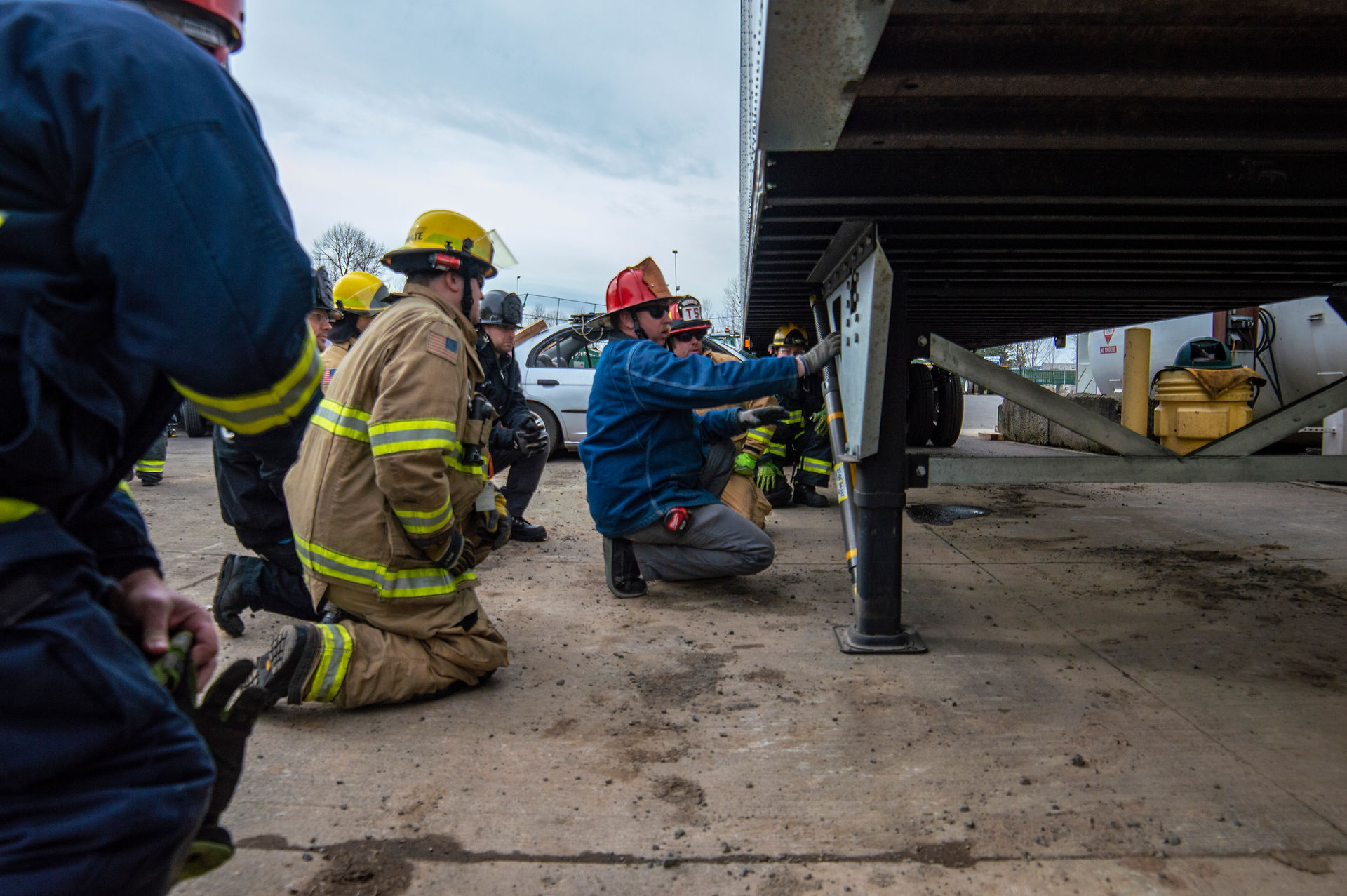SINGLE POINT LIFT; Roof-resting vehicle
- r10ahale
- Sep 18, 2019
- 4 min read
Roof-resting vehicles may pose unique challenges to rescuers. Typically, these vehicles are involved in some kind of high-speed/high-impact collision that causes the vehicle to roll/flip multiple times. The potential for ejections and/or extremities pinned under the vehicle is something rescuers should consider when sizing-up the scene. We must also consider the need to create space to push the dash away from the patient’s legs if they’re pinned. The technique discussed further provides an option for lifting the vehicle and gaining space. It is not the way, or only way, it as a way to get the job done. This write-up is geared towards Paratech’s strut and Hydrafusion Strut (HFS) system or any other system that utilizes a lifting component separate from their stabilization struts.

As crews arrive on scene, it is necessary to do a thorough 360 size-up. While this is being done by the officer, crews should be initially stabilizing the roof-resting vehicle with cribbing and begin working towards their primary stabilization of the vehicle. Primary stabilization is typically done utilizing the “buttress” principle, which consists of struts working in conjunction with a chain cradle for the application. Rescuers that are utilizing the Paratech equipment do not always run with the struts and HFS’s together on the unit. Each call that crews respond to should dictate the setup for the struts and HFS. There is not a “one-size fits all” approach to strut set up. We have also found that we will not always need to lift on roof-resting vehicles. We need to consider it but will not always need it. That being said, crews may be well into setting up the primary stabilization with struts prior to seeing that the patient’s extremity is pinned on the exterior of the vehicle. It would not make much sense to tear down our system in order to place HFSs on the primary stabilization (and now lifting) struts. The single-point lift gives us another option of lifting when the HFS is not on the primary stabilization strut.
Once we have secured the vehicle with our primary stabilization, setting up the single point lift can be done fairly quickly. Take a relatively long piece of chain (long enough to connect the two c-posts and allow for HFS placement) and attach it to both c-posts on the vehicle as high up as possible in relation to the ground. Chain shorteners can be used to shorten the chain and take the slack out if needed. Rescuers could lose valuable lifting height failing to remove slack out of the chain. As the single-point lift begins, a rescuer needs to mind the HFS collar to capture the lift. Other rescuers should be on the primary stabilization struts to capture those collars as well. (They will need to extend up with the lift.) The Paratech VSK controller helps by keeping 25psi of air pressure in the struts capturing the lift allowing the strut to extend with the lift. If an air source is not used, rescuers will need to push the strut head up to follow the lift. When the lift is done, lock all collars and extricate as needed.
Points to consider:
· Some crews do not run with HFS connected to their struts. This is fine. Some may also put the HFS on the struts prior to setting up the entire system. We have discovered that this varies depending on SOPs and storage on units.
· The single point lift allows for lift/capture of the vehicle. If you refer to Paratech’s manual, they recommend using two separate systems- one for lift and one for capture/stability. This single point lift allows for that "safety" to be in place. When possible, the stabilization struts and lifting components should be secured separately. In the attached photos, we tied the lifting strut hinged-base into the stabilization strut hinged bases as a precaution and were limited due to our work area. Pickets would work great if the terrain provided that option.
· Lifting from the rear of the vehicle may give you height in the back but remember it minimizes the lift the further you get from it. HFS 10 gives you 10" of lift. If you have 10" of lift in the rear, you may only have a few inches in the front- not a full 10". To truly maximize your lift, all the slack needs to be taken out of the chain cradled around the c-posts. The good thing about lifting and capturing is the possibility of resetting the system. If the HFS was part of the primary stabilization struts, once your 10” of lift is used- you cannot reset.

· The angles of the struts are everything. Each manufacturer recommends their own lifting angles but the lifting angle should be made at relatively the same angle as the trunk is sitting and while also trying to keep it as vertical as possible. This will also help to maximize lift. We want to emphasis the lift up and not out.

· Center of gravity (CoG) is something that always needs to be considered when lifting objects. It is difficult to determine the exact center of gravity during a single-point lift. The patient, objects in the vehicle and vehicle orientation may change the "CoG" in every accident we run. Eyes need to continuously monitor the movement of the vehicle: up, down, left, right, front and back.

· Please keep in mind; the higher you lift, the less stable the object becomes. Because we are taking away surface contact at the front of the vehicle, it is going to easily shift side-to-side. Consider additional wedges/cribbing to help counter-act that shifting.
Take this idea to your next training session and give it a shot. It is definitely another option worth having in your playbook. If you have any questions or comments, feel free to discuss it with us here.
Go get those hands dirty!







Comments